A Challenged Evaporite Paradigm?
Abstract
1. Introduction
2. Observations from Solid Salt Deposits
2.1. Observations from the Mediterranean
2.2. Biostratigraphy of Salt Beds without Marine Species
- Loulé salt mine in southern Portugal, which is in Early Jurassic mobile salt. Impure halite, coaly shales, and dolomitised/silicified gypsum were sampled.
- Souss-Massa salt mine in Morocco—an Early Jurassic non-mobile salt, where core samples from halite and shales were obtained.
- Wieliczka salt mine in southern Poland, which comprises Miocene mobile salt. Several types of salt and interbedded shales were sampled.
- Zechstein salt in northern Poland, where red and grey shales, impure black halite, dolomites, and black shales were sampled.
- Santana gypsum quarry in central Portugal, where outcrop samples of recrystallised and re-precipitated gypsum and primary gypsum were obtained.
2.3. Anomalous Features in Zechstein and Messinian Salts
2.4. Coloured Salts in the Klodawa Salt Stock, Poland
2.5. Soluble Salts Deposited in Humid Environments
2.6. Diapiric or Extrusive Salt in the Northern Red Sea
2.7. Isostasy and Salt Basins
3. Brines Sampled from Crust and Mantle
3.1. The Significance of Brines in the Subsurface
3.2. Saline Brines collected from the Continental Crust
3.3. Fluids Observed in Deep Wells
- (1)
- An uppermost layer of brackish and saline water from 300–900 m depth.
- (2)
- Saline water and brines from 1000–2000 m depth.
- (3)
- Superdeep brines which have been observed to a depth of at least 11 km in the drill hole on the Kola Peninsula, U.S.S.R.
3.4. Fluids Observed in Rocks Originating from the Lower Crust and Mantle
4. Geophysical Observations of Salinity at Depth in the Crust and Mantle
4.1. Observations from the Cascadia Subduction Zone
4.2. Observations from the Altiplano, Lake Uyuni Area
4.3. Observations from the Altiplano-Puna Area, Bolivia
4.4. Observations from China and Tibet
4.5. Observations from the Canadian Shield
4.6. Commonalities of Geophysical Observations in Deep Crust and Mantle
- Similar conductive patterns caused by saline fluids emerge in regions with ongoing subduction, and within old cratons where melting can be excluded as the cause.
- Saline fluids are observed during ascent from subducting slabs, through the mantle wedge, towards a trench parallel zone ca. 30 km from the volcanic arc, in the direction of the subduction trench.
- Saline fluids seem to remain in the mantle and lower crust, although some fluids may invade the upper crust via deep faults and weakness zones.
- Trench parallel zones of conductivity, showing anomalous seismic velocities, ductile-brittle behaviour, and seismicity, are located at ca. 20 km depth and below, indicating certain mineralogical and mechanical properties of this zone caused by fluids.
- In conclusion, the observations presented in chapter 4 provide evidence for the presence of saline fluids extending both shallow and deep environments under most continents and regions that have been subject to subduction.
- Continental rifting in the vicinity of subduction zones, therefore, has the capacity to release vast amounts of salts.
5. Discussion
6. Conclusions
Author Contributions
Funding
Data Availability Statement
Conflicts of Interest
References
- Popper, K. Logik der Forschung; Verlag von Julius Springer: Vienna, Austria, 1934. [Google Scholar]
- Hsü, K.J.; Cita, M.B.; Ryan, W.B.F. The origin of the Mediterranean evaporite. Initial Reports of the Deep Sea Drilling Project. Gov. Print. Off. 1973, 42, 1203–1232. [Google Scholar]
- Roveri, M.; Flecker, R.; Krijgsman, W.; Lofi, J.; Lugli, S.; Manzi, V.; Sierro, F.J.; Bertini, A.; Camerlenghi, A.; De Lange, G.; et al. The Messinian Salinity Crisis: Past and future of a great challenge for marine sciences. Mar. Geol. 2014, 352, 25–58. [Google Scholar] [CrossRef]
- Spatola, D.; del Moral-Erencia, J.D.; Micallef, A.; Camerlenghi, A.; Garcia-Castellanos, D.; Gupta, S.; Bohorquez, P.; Gutscher, M.-A.; Bertoni, C. A single-stage megaflood at the termination of the Messinian salinity crisis: Geophysical and modelling evidence from the eastern Mediterranean Basin. Mar. Geol. 2020, 430, 106337. [Google Scholar] [CrossRef]
- Lugli, S.; Manzi, V.; Roveri, M.; Schreiber, C.B. The deep record of the Messinian salinity crisis: Evidence of a non-desiccated Mediterranean Sea. Palaeogeogr. Palaeoclimatol. Palaeoecol. 2015, 433, 210–218. [Google Scholar] [CrossRef]
- Maillard, A.; Gaullier, V.; Lézin, C.; Chanier, F.; Odonne, F.; Lofi, J. New onshore/offshore evidence of the Messinian Erosion Surface from key areas: The Ibiza-Balearic Promontory and the Orosei-Eastern Sardinian margin. BSGF—Earth Sci. Bull. 2020, 191, 9. [Google Scholar] [CrossRef]
- Andreetto, F.; Matsubara, K.; Beets, C.J.; Fortuin, A.R.; Flecker, R.; Krijgsman, W. High Mediterranean water-level during the Lago-Mare phase of the Messinian Salinity Crisis: Insights from the Sr isotope records of Spanish marginal basins (SE Spain). Palaeogeogr. Palaeoclimatol. Palaeoecol. 2021, 562, 110139. [Google Scholar] [CrossRef]
- Bulian, F.; Jiménez-Espejo, F.J.; Andersen, N.; Larrasoaña, J.C.; Sierro, F.J. Mediterranean water in the Atlantic Iberian margin reveals early isolation events during the Messinian Salinity Crisis. Glob. Planet. Chang. 2023, 231, 104297. [Google Scholar] [CrossRef]
- Meilijson, A.; Steinberg, J.; Hilgen, F.; Bialik, O.M.; Waldmann, N.D.; Makovsky, Y. Deep-basin evidence resolves a 50-year-old debate and demonstrates synchronous onset of Messinian evaporite deposition in a non-desiccated Mediterranean. Geology 2018, 46, 243–246. [Google Scholar] [CrossRef]
- Machado, G. Salt Biostratigraphy in Oil and Gas Exploration: An Untapped Source of Data? Available online: https://archives.datapages.com/data/geo-expro-magazine/017/017001/pdfs/62.htm (accessed on 17 March 2020).
- Braitsch, O. Salt Deposits Their Origin and Composition; Springer: New York, NY, USA, 1971; ISBN 3-540-05206-2. [Google Scholar]
- Bauer, S.J.; Gardner, W.P.; Lee, H. Noble Gas Release from Bedded Rock Salt during Deformation. Geofluids 2019, 2019, 2871840. [Google Scholar] [CrossRef]
- Carreño-Márquez, I.J.A.; Castillo-Sandoval, I.; Pérez-Cázares, B.E.; Fuentes-Cobas, L.E.; Esparza Ponce, H.E.; Menéndez-Méndez, E.; Fuentes-Montero, M.E.; Montero-Cabrera, M.E. Evolution of the Astonishing Naica Giant Crystals in Chihuahua, Mexico. Minerals 2021, 11, 292. [Google Scholar] [CrossRef]
- Costanzo, A.; Cipriani, M.; Feely, M.; Cianflone, G.; Dominici, R. Messinian twinned selenite from the Catanzaro Trough, Calabria, Southern Italy: Field, petrographic and fluid inclusion perspectives. Carbonates Evaporites 2019, 34, 743–756. [Google Scholar] [CrossRef]
- Natalicchio, M.; Pellegrino, L.; Clari, P.; Pastero, L.; Dela Pierre, F. Gypsum lithofacies and stratigraphic architecture of a Messinian marginal basin (Piedmont Basin, NW Italy). Sediment. Geol. 2021, 425, 106009. [Google Scholar] [CrossRef]
- Aloisi, G.; Guibourdenche, L.; Natalicchio, M.; Caruso, A.; Haffert, L.; El Kilany, A.; Dela Pierre, F. The geochemical riddle of “low-salinity gypsum” deposits. Geochim. Cosmochim. Acta 2022, 327, 247–275. [Google Scholar] [CrossRef]
- Hovland, M.; Rueslåtten, H.G.; Johnsen, H.K.; Kvamme, B.; Kuznetsova, T. Salt formation associated with sub-surface boiling and supercritical water. Mar. Pet. Geol. 2006, 23, 855–869. [Google Scholar] [CrossRef]
- Tobola, T. Inclusions in anhydrite crystals from blue halite veins in the Klodawa Salt Dome (Zechstein, Poland). Geol. Q. 2016, 60–63, 572–585. [Google Scholar] [CrossRef]
- Tobola, T.; Wachowiak, J. Evidence of high-temperature rock salt transformations in areas of occurrence of borate minerals (Zechstein, Klodawa salt dome, Poland). Geol. Q. 2018, 62, 134–145. [Google Scholar] [CrossRef]
- Albright, J.L.; Lueth, V.W. Pecos diamonds–quartz and dolomite crystals from the Seven Rivers Formation outcrops of southeastern New Mexico. N. M. Geol. 2003, 25, 63–74. [Google Scholar] [CrossRef]
- Debure, M.; Lassin, A.; Marty, N.C.; Claret, F.; Virgone, A.; Calassou, S.; Gaucher, E.C. Thermodynamic evidence of giant salt deposit formation by serpentinization: An alternative mechanism to solar evaporation. Nat. Sci. Rep. 2019, 9, 11720. [Google Scholar] [CrossRef] [PubMed]
- Scribano, V.; Carbone, S.; Manuella, F.C.; Hovland, M.; Rueslåtten, H.; Johnsen, H.K. Origin of salt giants in abyssal serpentinite systems. Int. J. Earth Sci. (Geol. Rundsch.) 2017, 106, 2595–2608. [Google Scholar] [CrossRef]
- Mart, Y.; Ross, D.A. Post-Miocene rifting and diapirism in the northern Red Sea. Mar. Geol. 1987, 74, 173–190. [Google Scholar] [CrossRef]
- Augustin, N.; van der Zwan, F.M.; Devey, C.W.; Brandsdóttir, B. 13 million years of seafloor spreading throughout the Red Sea Basin. Nat. Commun. 2021, 12, 2427. [Google Scholar] [CrossRef] [PubMed]
- Ligi, M.; Bonatti, E.; Bosworth, W.; Ronca, S. Oceanization Starts at Depth During Continental Rupturing in the Northern Red Sea. In Geological Setting, Palaeoenvironment and Archaeology of the Red Sea; Rasul, N.M.A., Stewart, I.C.F., Eds.; Springer Nature: Cham, Switzerland, 2019; ISBN 978-3-319-99407-9. [Google Scholar]
- Ali, M.; Koyi, H.; Bosworth, W.; Ligi, M.; Ball, P.J.; Decarlis, A. Geometry and kinematics of the Middle to Late Miocene salt tectonics, central Egyptian Red Sea margin. J. Struct. Geol. 2023, 176, 104955. [Google Scholar] [CrossRef]
- Van den Belt, F.J.G.; De Boer, P.L. A shallow-basin model for ‘saline giants’ based on isostasy-driven subsidence. Spec. Publ. Int. Assoc. Sedimentol. 2007, 38, 241–252. [Google Scholar]
- Heida, H.; Raad, F.; Garcia-Castellanos, D.; Jiménez- Munt, I.; Maillard, A.; Lofi, J. Flexural-isostatic reconstruction of the Western Mediterranean during the Messinian Salinity Crisis: Implications for water level and basin connectivity. Basin Res. 2022, 34, 50–80. [Google Scholar] [CrossRef]
- Rowan, M.G. The South atlantic and Gulf of Mexico salt basims: Crustal thinning, subsidence and accomodation for salts and presalt strata. Geol. Soc. Lond. Spec. Publ. 2018, 476, 333–363. [Google Scholar] [CrossRef]
- Epin, M.-A.; Manatschal, G.; Sapin, F.; Rowan, M.G. The tectono-magmatic and subsidence evolution during lithospheric breakup in a salt-rich rifted margin: Insights from a 3D seismic survey from southern Gabon. Mar. Pet. Geol. 2021, 128, 105005. [Google Scholar] [CrossRef]
- Esedo, R.; Van Wijk, J.; Coblentz, D.; Meyer, R. Uplift prior to continental breakup: Indication for removal of mantle lithosphere? Geosphere 2012, 8, 1078–1085. [Google Scholar] [CrossRef]
- Ginzburg, A.I.; Kostianoy, A.G.; Sheremet, N.A. On the Dynamics of Waters in Kara-Bogaz-Gol (Satellite Information). Cosmic Res. 2022, 60 (Suppl. S1), S27–S37. [Google Scholar] [CrossRef]
- Bottomley, D.J.; Clark, I.D.; Battye, N.; Kotzer, T. Geochemical and isotopic evidence for a genetic link between Canadian Shield brines, dolomitization in the Western Canada Sedimentary Basin, and Devonian calcium-chloridic seawater. Can. J. Earth Sci. 2005, 42, 2059–2071. [Google Scholar] [CrossRef]
- Stotler, R.L.; Frape, S.K.; Ruskeeniemi, T.; Pitkanen, P.; Blowes, D.W. The interglacial–glacial cycle and geochemical evolution of Canadian and Fennoscandian Shield groundwaters. Geochim. Cosmochim. Acta 2012, 76, 45–67. [Google Scholar] [CrossRef]
- Stober, I.; Bucher, K. Origin of salinity of deep groundwater in crystalline rocks. Terra Nova 1999, 11, 181–185. [Google Scholar] [CrossRef]
- Svensen, H.; Jamtveit, B.; Banks, D.A.; Austrheim, H. Halogen contents of eclogite facies fluid inclusions and minerals: Caledonides, western Norway. J. Metamorphic Geol. 2001, 19, 165–178. [Google Scholar] [CrossRef]
- Glassley, W.E. Elemental composition of concentrated brines in subduction zones and the deep continental crust. Precambrian Res. 2001, 105, 371–383. [Google Scholar] [CrossRef]
- Emmermann, R.; Lauterjung, J. The German Continental Deep Drilling Program KTB: Overview and major results. J. Geophys. Res. 1997, 102, 18179–18201. [Google Scholar] [CrossRef]
- Kozlovsky, Y.A. The Superdeep Well of the Kola Peninsula; Springer: New York, NY, USA, 1987; ISBN 0-387-16416-2. [Google Scholar]
- NurmiIlmo, P.A.; Kukkonen Pertti, T.; Lahermo, W. Geochemistry and origin of saline groundwaters in the Fennoscandian Shield. Appl. Geochem. 1988, 3, 185–203. [Google Scholar]
- Kietäväinen, R. Deep Groundwater Evolution at Outokumpu, Eastern Finland: From Meteoric Water to Saline Gas-Rich Fluid. Ph.D. Thesis, University of Helsinki, Helsinki, Finland, 2017. [Google Scholar]
- Scambelluri, M.; Piccardo, G.B.; Philippot, P.; Robbiano, A.; Negretti, L. High salinity fluid inclusions formed from recycled seawater in deeply subducted alpine serpentinite. Earth Planet. Sci. Lett. 1997, 148, 485–499. [Google Scholar] [CrossRef]
- Mukherjee, B.K.; Sachan, H.K. Fluids in coesite-bearing rocks of the Tso Morari Complex, NW Himalaya: Evidence for entrapment during peak metamorphism and subsequent uplift. Geol. Mag. 2009, 146, 876–889. [Google Scholar] [CrossRef]
- Harlaux, M.; Mercadier, J.; Bonzi, W.M.-E.; Kremer, V.; Marignac, C.; Cuney, M. Geochemical Signature of Magmatic-Hydrothermal Fluids Exsolved from the Beauvoir Rare-Metal Granite (Massif Central, France): Insights from LA-ICPMS Analysis of Primary Fluid Inclusions. Geofluids 2017, 2017, 1925817. [Google Scholar] [CrossRef]
- Touret, J. Fluid regime during the formation of continental crust. Acad. Lett. 2021, 2, 655. [Google Scholar] [CrossRef]
- Zedgenizov, D.A.; Ragozin, A.L.; Shatsky, V.S. Chloride–Carbonate Fluid in Diamonds from the Eclogite Xenolith. Doklady Akademii Nauk 2007, 415–416, 800–803. [Google Scholar] [CrossRef]
- Wannamaker, P.E.; Evans, R.L.; Bedrosian, P.A.; Unsworth, M.J.; Maris, V.; McGary, R.S. Segmentation of plate coupling, fate of subduction fluids, and modes of arc magmatism in Cascadia, inferred from magnetotelluric resistivity. Geochem. Geophys. Geosyst. 2014, 15, 4230–4253. [Google Scholar] [CrossRef]
- Huang, R.; Ding, X.; Lin, C.-T.; Zhan, W.; Ling, M. Effect of saline fluids on chlorine incorporation in serpentine. Solid Earth Sci. 2018, 3, 61–66. [Google Scholar] [CrossRef]
- McGary, R.S.; Evans, R.L.; Wanamaker, P.E.; Elsenbeck, J.; Rodenay, S. Pathway from subducting slab to surface for melt and fluids beneath Mount Rainier. Nat. Res. Lett. 2014, 511, 338–340. [Google Scholar] [CrossRef] [PubMed]
- McGary, R.S. The CAFE Experiment: A Joint Seismic and MT Investigation of the Cascadia Subduction System. Ph.D. Thesis, Massachusetts Institute of Technology, Cambridge, MA, USA, 2013. [Google Scholar]
- Kühn, C.; Küster, J.; Brasse, H. Three-dimensional inversion of magnetotelluric data from the Central Andean continental margin. Earth Planets Space 2014, 66, 112. [Google Scholar] [CrossRef][Green Version]
- Bedrosian, P.A. MT+, Integrating Magnetotellurics to Determine Earth Structure, Physical State, and Processes. Surv. Geophys. 2007, 28, 121–167. [Google Scholar] [CrossRef]
- Brasse, H.; Lezaeta, P.; Rath, V.; Schwalenberg, K.; Soyer, W.; Haak, V. The Bolivian Altiplano conductivity anomaly. J. Geophys. Res. 2002, 107, 2096. [Google Scholar] [CrossRef]
- Schwalenberg, K.; Rath, V.; Haak, V. Sensitivity studies applied to a two-dimensional resistivity model from the Central Andes. Geophys. J. Int. 2002, 150, 673–686. [Google Scholar] [CrossRef]
- Schilling, F.R.; Trumbull, R.B.; Brasse, H.; Haberland, C.; Asch, G.; Bruhn, D.; Mai, K.; Haak, V.; Giese, P.; Muoz, M.; et al. Chapter 22—Partial melting in the Central Andean crust: A review of geophysical, petrophysical, and petrologic evidence. In The Andes: Active Subduction Orogeny, Frontiers in Earth Sciences; Oncken, O., Chong, G., Franz, G., Giese, P., GÃutze, H.J., Ramos, V.A., Strecker, M.R., Wigger, P., Eds.; Springer: Berlin/Heidelberg, Germany, 2006; pp. 459–474. ISBN 978-3-540-48684-8. [Google Scholar]
- Araya Vargas, J.; Meqbel, N.; Ritter, O.; Brasse, H.; Weckmann, U.; Yáñez, G.; Godoy, B. Fluid Distribution in the Central Andes Subduction Zone Imaged with Magnetotellurics. J. Geophys. Res. 2019, 124, 4017–4034. [Google Scholar] [CrossRef]
- Samrock, F.; Grayver, A.V.; Bachmann, O.; Karakas, Ö.; Saar, M.O. Integrated magnetotelluric and petrological analysis of felsic magma reservoirs: Insights from Ethiopian rift volcanoes. Earth Planet. Sci. Lett. 2021, 559, 116765. [Google Scholar] [CrossRef]
- Kawamoto, T.; Kanzakib, M.; Mibec, K.; Matsukage, K.N.; Ono, S. Separation of supercritical slab-fluids to form aqueous fluid and melt components in subduction zone magmatism. Proc. Natl. Acad. Sci. USA 2012, 109, 18695–18700. [Google Scholar] [CrossRef]
- Laumonier, M.; Gaillard, F.; Muir, D.; Blundy, J.; Unsworth, M. Giant magmatic water reservoirs at mid-crustal depth inferred from electrical conductivity and the growth of the continental crust. Earth Planet. Sci. Lett. 2017, 457, 173–180. [Google Scholar] [CrossRef]
- Comeau, M.J.; Unsworth, M.J.; Ticona, F.; Sunagua, M. Magnetotelluric images of magma distribution beneath Volcán Uturuncu, Bolivia: Implications for magma dynamics. Geology 2015, 43, 243–246. [Google Scholar] [CrossRef]
- Weis, P. The dynamic interplay between saline fluid flow and rock permeability in magmatic-hydrothermal systems. Geofluids 2015, 15, 350–371. [Google Scholar] [CrossRef]
- Wei, W.-B.; Jin, S.; Ye, G.-F.; Deng, M.; Tan, H.-D.; Unsworth, M.; Jones, A.G.; Booker, J.; Li, S. Coductivity Structure of Crust and upper Mantle beneath the Northern Tibetan Platau: Results of Super-Wide Band Magnetotelluric Sounding. Chin. J. Geophys. 2006, 49, 1098–1110. [Google Scholar]
- Zhang, L.; Wei, W.-B.; Jin, S.; Ye, G.; Dong, H.; Zhang, F.; Xie, C.; Wang, H. Structure of the Eastern Margin of the Tibetan Plateau from Magnetotelluric Studies. In Proceedings of the Near Surface Geophysics Asia Pacific Conference, Beijing, China, 17–19 July 2013. [Google Scholar] [CrossRef]
- Li, X.; Ma, X.; Chen, Y.; Xue, S.; Varentsov, I.M.; Bai, D. A plume-modified lithospheric barrier to the southeastward flow of partially molten Tibetan crust inferred from magnetotelluric data. Earth Planet. Sci. Lett. 2020, 548, 116493. [Google Scholar] [CrossRef]
- Xu, Y.; Yang, B.; Zhang, S.; Liu, Y.; Zhu, L.; Huang, R.; Chen, C.; Li, Y.; Luo, Y. Magnetotelluric imaging of a fossil paleozoic intraoceanic subduction zone in western Junggar, NW China. J. Geophys. Res. Solid Earth 2016, 121, 4103–4117. [Google Scholar] [CrossRef]
- Hill, G.J.; Roots, E.A.; Frieman, B.M.; Haugaard, R.; Craven, J.A.; Smith, R.S.; Snyder, D.B.; Zhou, X.; Sherlock, R. On Archean craton growth and stabilisation: Insights from lithospheric resistivity structure of the Superior Province. Earth Planet. Sci. Lett. 2021, 562, 116853. [Google Scholar] [CrossRef]

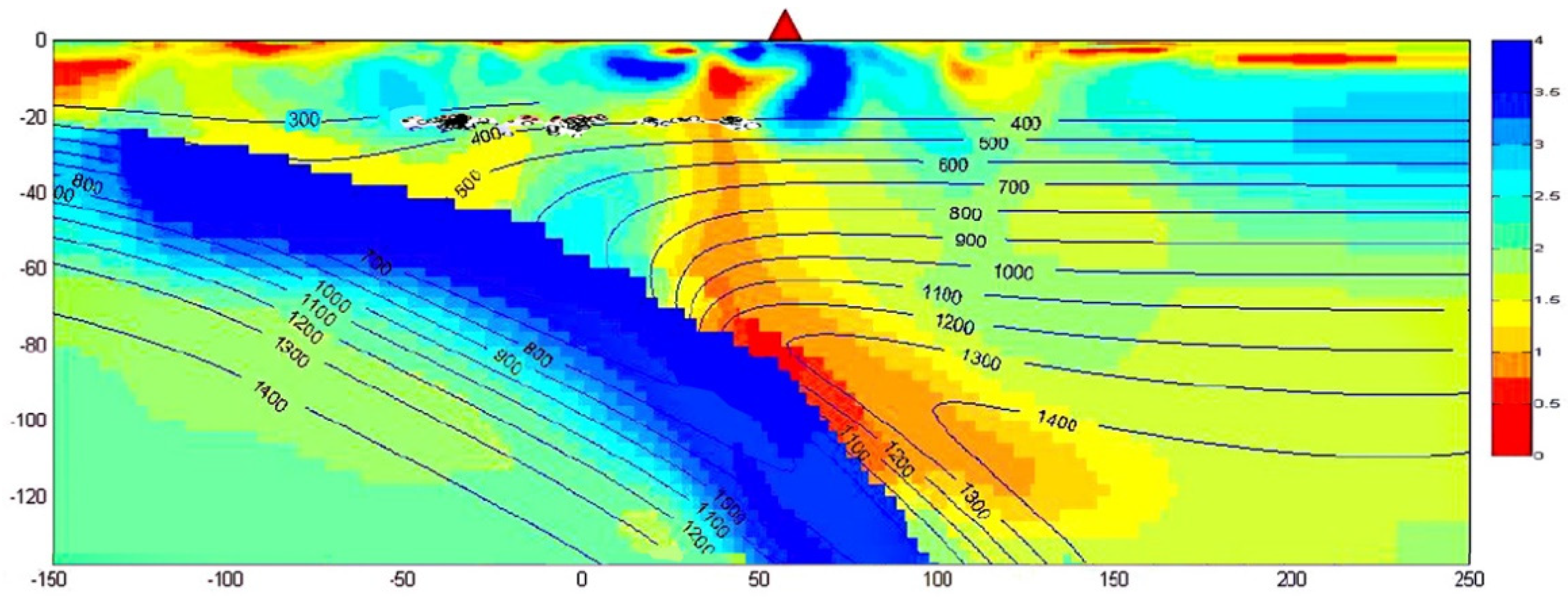
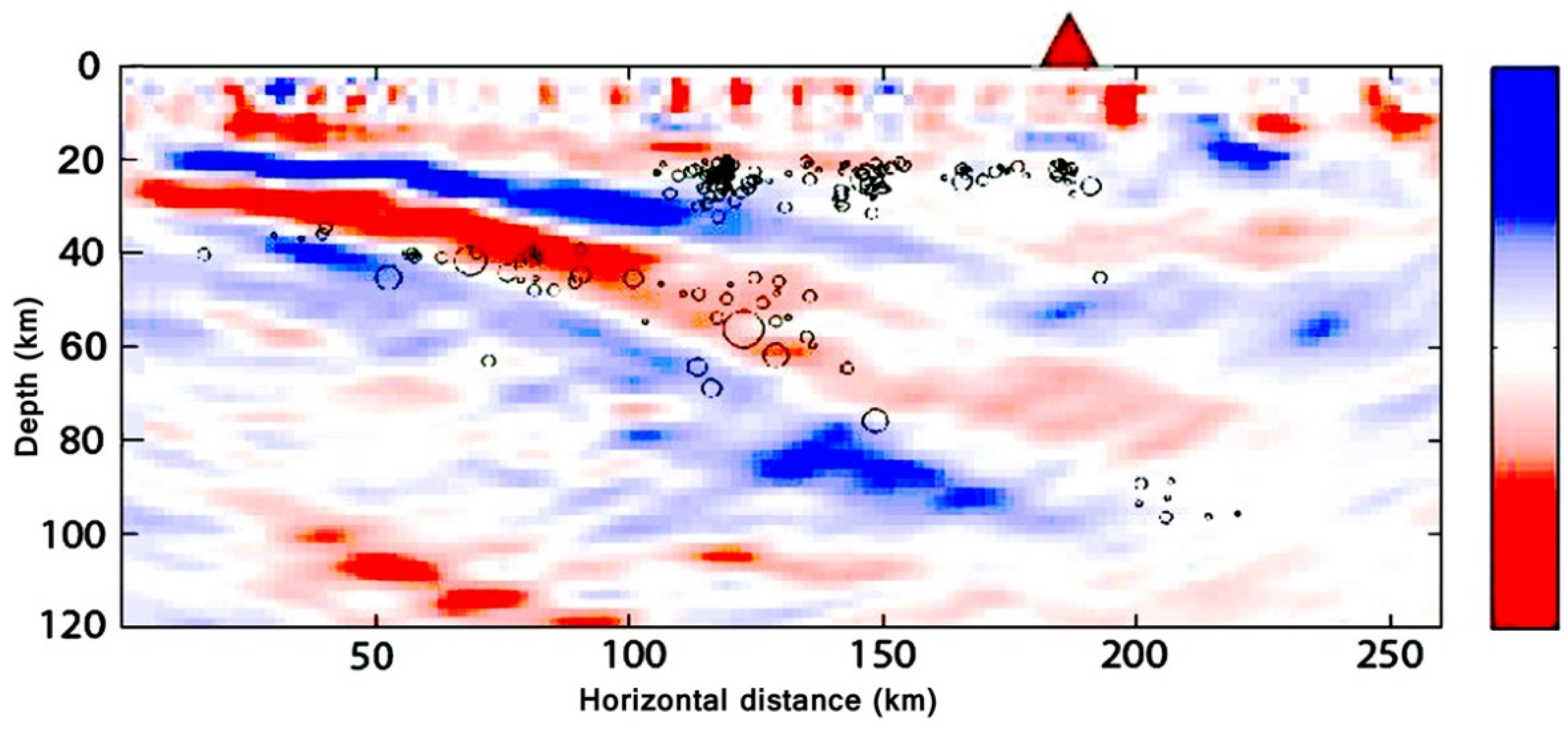
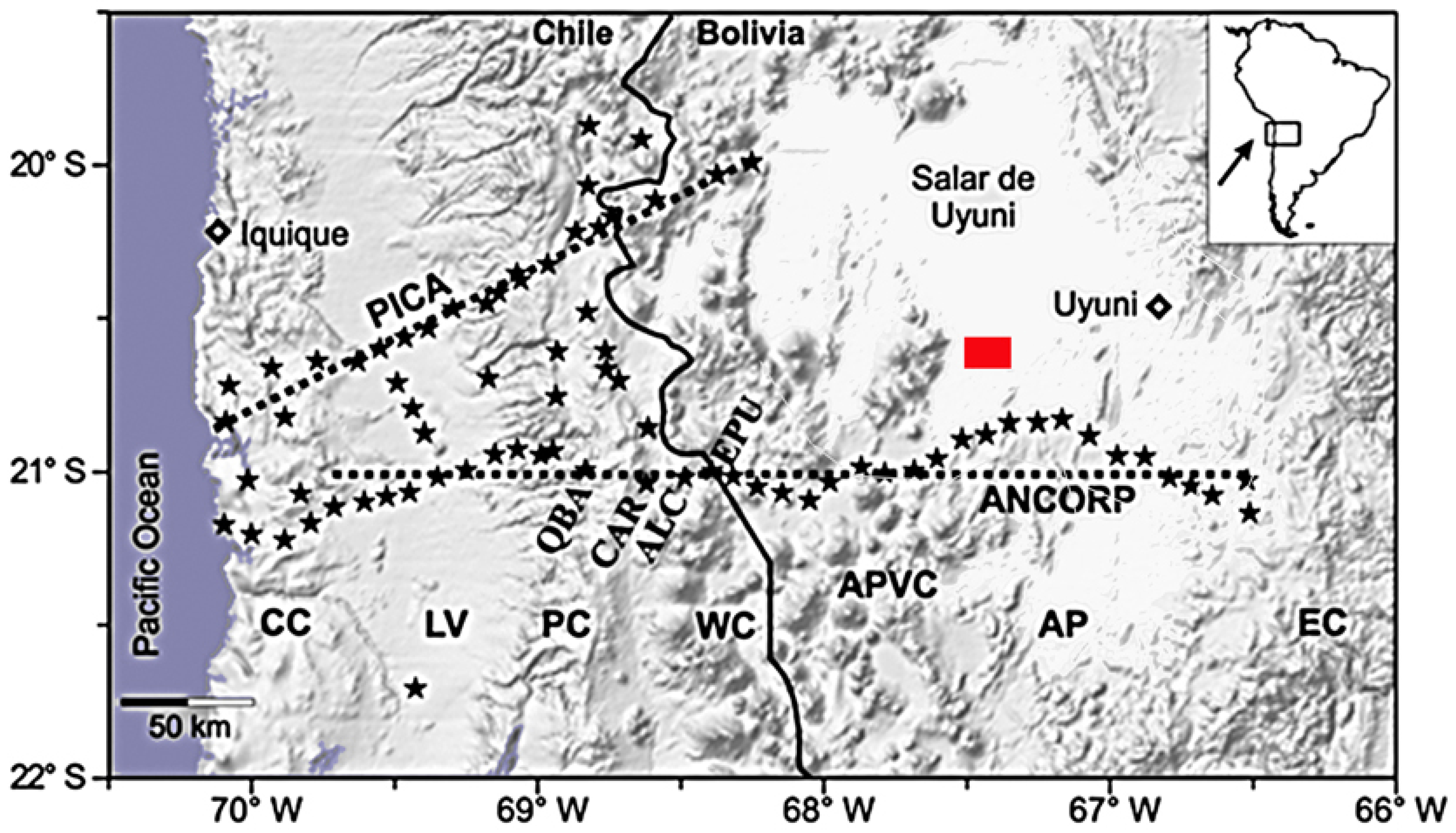
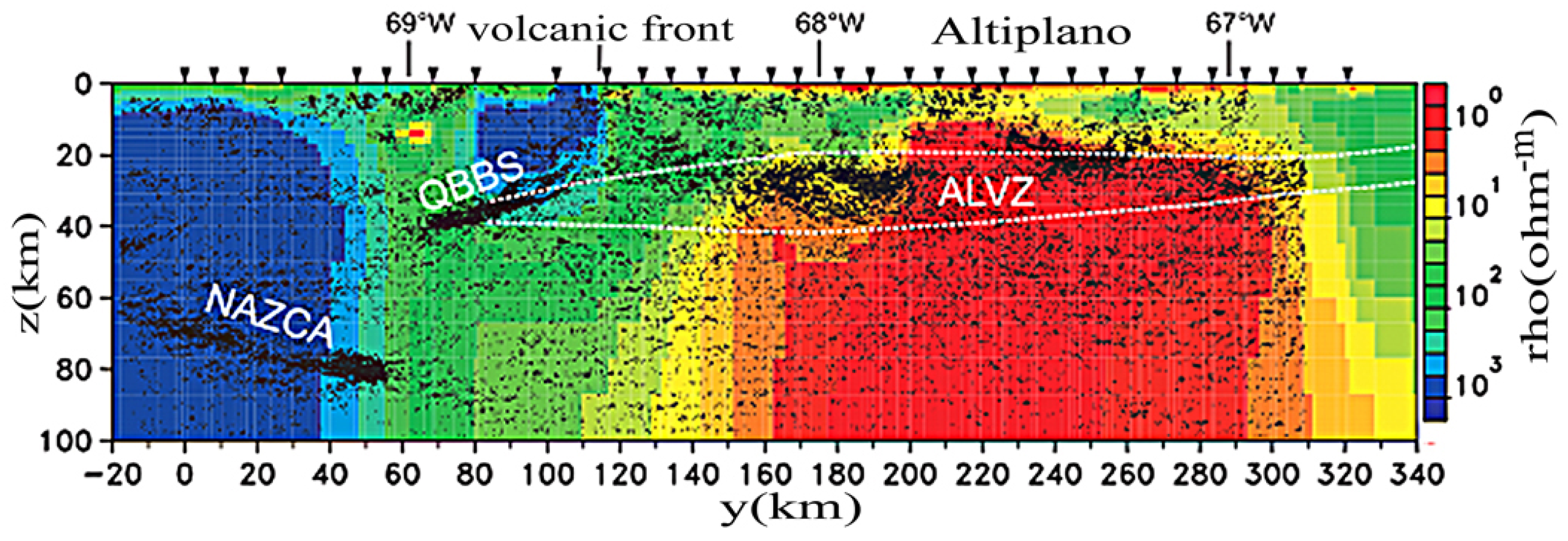
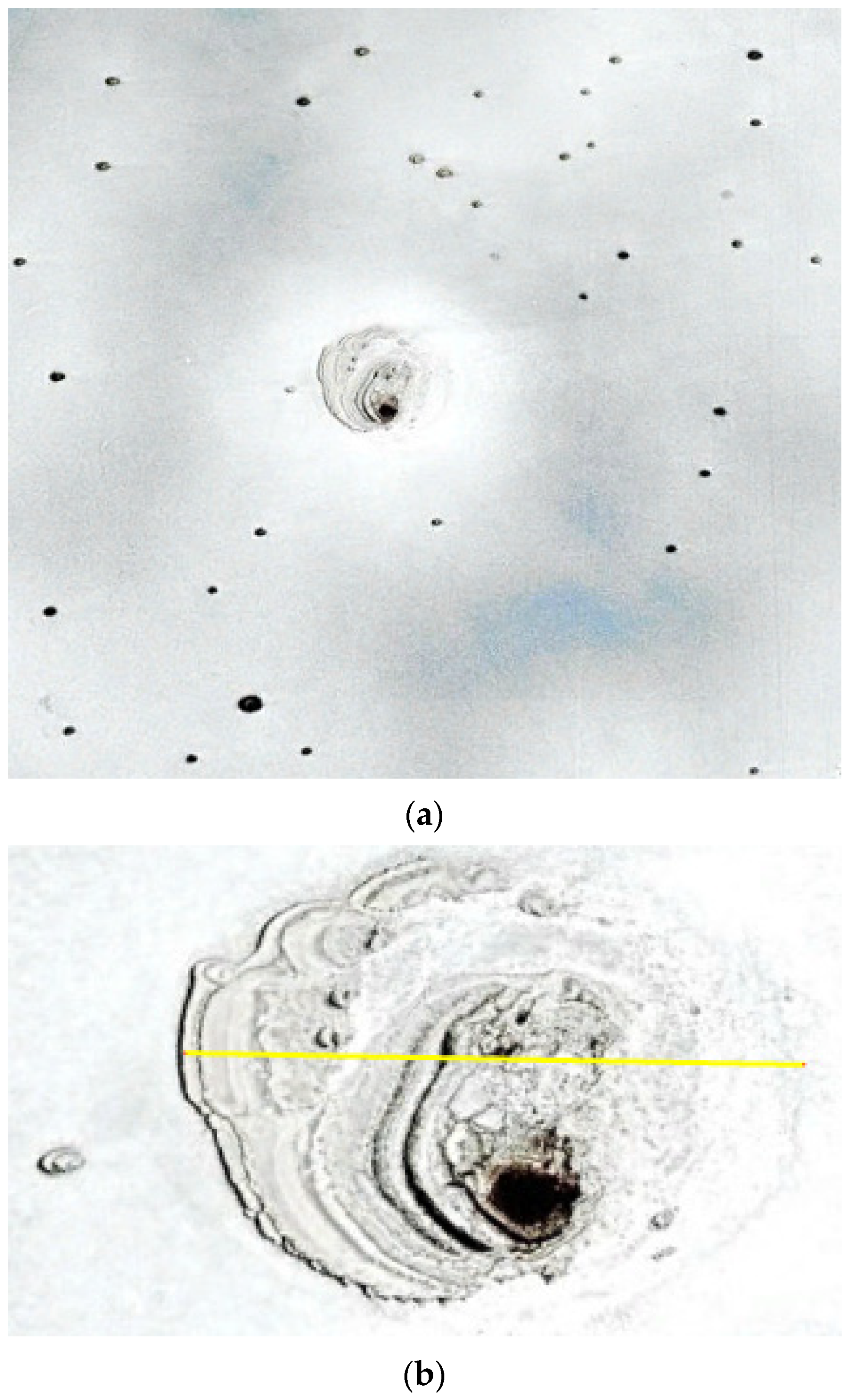
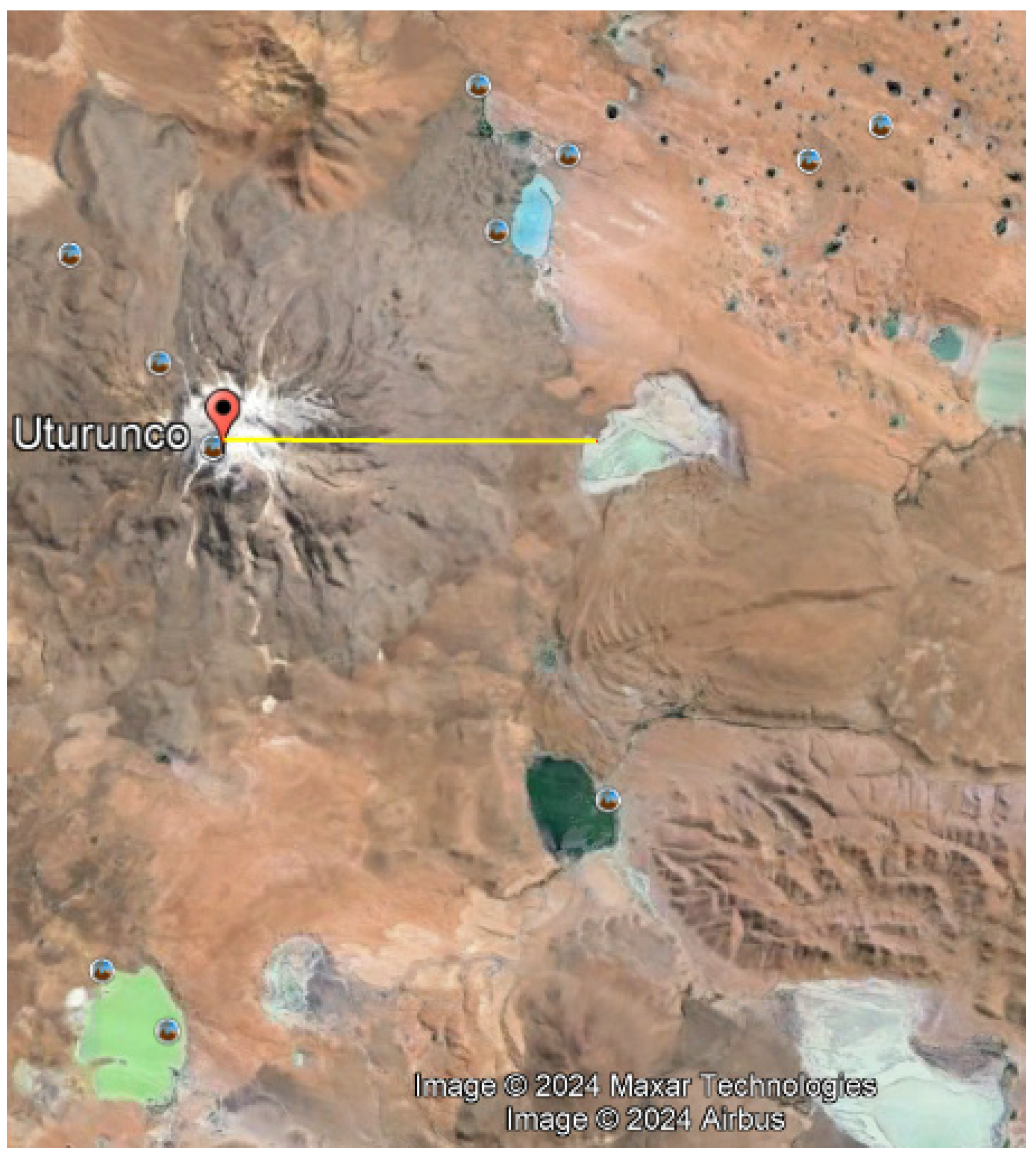



Disclaimer/Publisher’s Note: The statements, opinions and data contained in all publications are solely those of the individual author(s) and contributor(s) and not of MDPI and/or the editor(s). MDPI and/or the editor(s) disclaim responsibility for any injury to people or property resulting from any ideas, methods, instructions or products referred to in the content. |
© 2024 by the authors. Licensee MDPI, Basel, Switzerland. This article is an open access article distributed under the terms and conditions of the Creative Commons Attribution (CC BY) license (https://creativecommons.org/licenses/by/4.0/).
Share and Cite
Johnsen, H.K.; Hovland, M.T.; Rueslatten, H. A Challenged Evaporite Paradigm? Minerals 2024, 14, 527. https://doi.org/10.3390/min14050527
Johnsen HK, Hovland MT, Rueslatten H. A Challenged Evaporite Paradigm? Minerals. 2024; 14(5):527. https://doi.org/10.3390/min14050527
Chicago/Turabian StyleJohnsen, Hans Konrad, Martin Torvald Hovland, and Hakon Rueslatten. 2024. "A Challenged Evaporite Paradigm?" Minerals 14, no. 5: 527. https://doi.org/10.3390/min14050527
APA StyleJohnsen, H. K., Hovland, M. T., & Rueslatten, H. (2024). A Challenged Evaporite Paradigm? Minerals, 14(5), 527. https://doi.org/10.3390/min14050527








